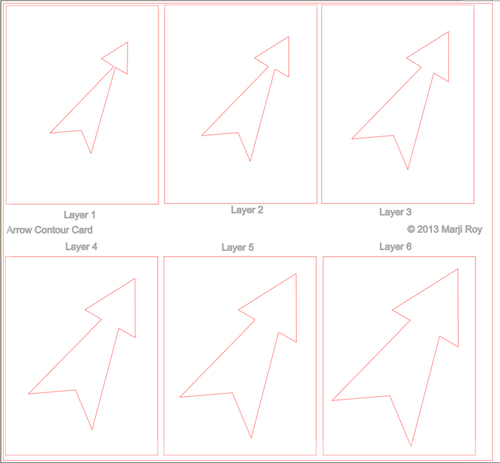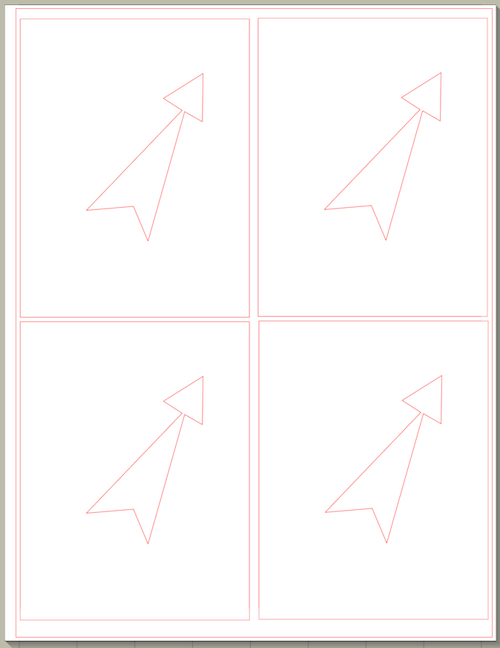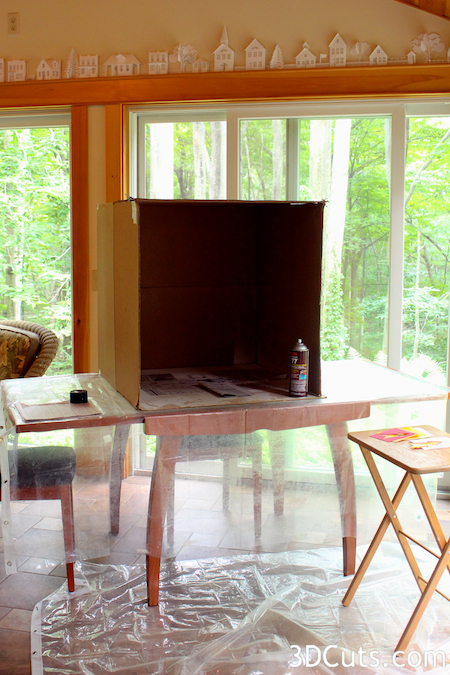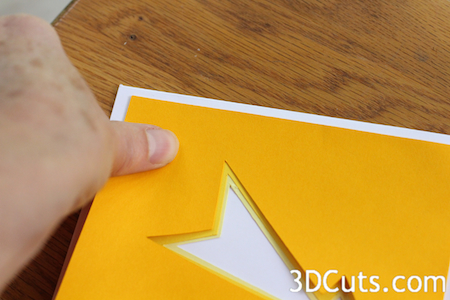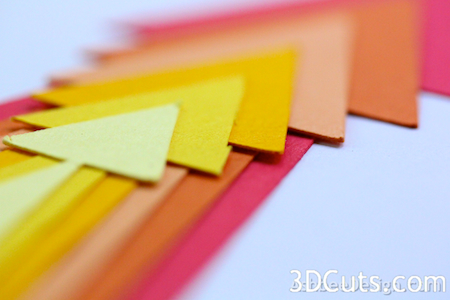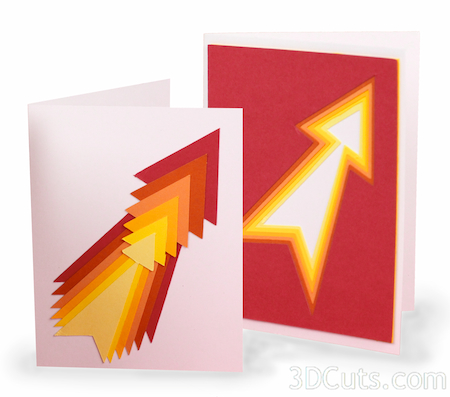Contour Cards • Tutorial
Project Description:
I have designed a series of all-occassion greeting cards using a design concept inspired by contour lines on a map. Combining that linear element with using papers in gradated colors creates a stunning card design that is easy to cut and assemble. The series includes a variety of themes but all have a strong graphic element and the distinctive contour lines created by stacking cut paper. Most of the designs provide both a positive and negative shape both of which can be used resulting in two cards. The tutorial is based on the arrow design and is available free on 3DCuts.com.
This tutorial is available online at http://www.3dcuts.com/arrow-contour-card-tutorial.
I have design many different variations of this card style. They are available on the Silhouette Online Store. I will re-draw others in the SVG and DFX formats as time allows. Let me know if you are interested and which designs are your favorites!
These cards are sized to fit in standard computerized invitation sized envelopes (4 1/4" x 5 1/2") so you can quickly create beautiful cards to send or to group and give as gifts. A collection of these would be a perfect hostess gift or a thank you gift to a teacher. Or how about getting some Christmas gifts done. These would be perfect for the neighbor, or the surprise person.
Supplies Needed:
Spray adhesive or other paper adhesive
Card Stock - in many colors
Standard computerized invitation sized envelopes (4 1/4" x 5 1/2")
Steps for completing the Contour Cards:
This is what the nested arrow card cutting file looks like.
1. Download the cutting file for your cutting machine.
2. Prepare the files:
The downloaded cutting file for the Contour Stars Card looks like this. (The PDF files for hand cutting are separated into 3 files to fit on 8.5 x 11 card stock.)
Upload it into your cutting software.
The file is grouped so ungroup it and delete the text. That is there to help you identify parts.
Directions for adjusting SVG files to cut on a Silhouette are here.
Copy each layer and paste it into a new file. You can cut 4 from each 8.5 x 11 sheet.
3. Separate the files.
Copy each layer and paste it into its own new file.
Each layer must be cut from a different color of card stock.
You can duplicate each file and paste it 4 times on a 8 1/2 x 11 sheet of card stock and make 4 matching cards at once. This is a great time saver if you are making collections to give as gifts.
Repeat this for every layer.
4. Cut the files.
Carefully remove from cutting mats and stack them up. It is easy to flip things over and then they won't match as precisely so work with an organized approach.
Helpful Hint: I also mark the back side and the top with just a pen dot. It helps from getting them mixed up if you accidentally drop them all on the floor.
Cut all the parts.
5. Create the card backing.
These designs are made to fit on a 1/2 sheet of 8 1/2 x 11 card stock.
Choose a background color and cut it in half the short way using a paper cutter.
Crease the fold seam using a bone folding tool.
Fold in half. Make two.
Here are all the cut parts from the arrow pattern. It will make two cards
Create a safe spray booth if making lots of cards.
6. Set-up a spray adhesive location.
You can use other glue types but for producing many cards this is the quickest.
Here is mine:
I work in my sunroom with all the doors open for good ventilation.
I cover the table and floor with plastic ( I save old shower curtain liners for this purpose.)
I set-up a recycled large cardboard box as my spray booth.
I cut newspaper to use to spray on.
Spray glue the backs.
6. Assemble the cards.
I put the first two layers face down and spray the back side.
Here is where you check for that little mark you made on the backside. It is easy to spray the wrong side so be careful!
Place carefully.
Quickly and carefully position the first layer on the white folded card and press. Alignment is important.
Add each layer aligning edges.
Quickly add the second color carefully lining up the outside edges. They match perfectly. The center stagger is correct if you line up the outsides.
Continue with each layer until all are in place.
You can use the negative shapes (the centers) for another design.
Then do the same with the negative shapes on another piece of folded card stock.
You can be creative with these pieces. Here I staggered the arrows instead of placing them exactly on top of each other.
I liked that dynamic better for this shape..
Here are the two finished cards for the Arrow Contour Card File.
The card is perfectly sized to work with the standard computerized invitation sized envelopes (4 1/4" x 5 1/2").
©2014 3DCuts.com, Marji Roy


